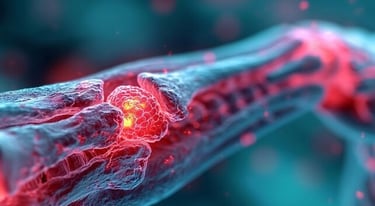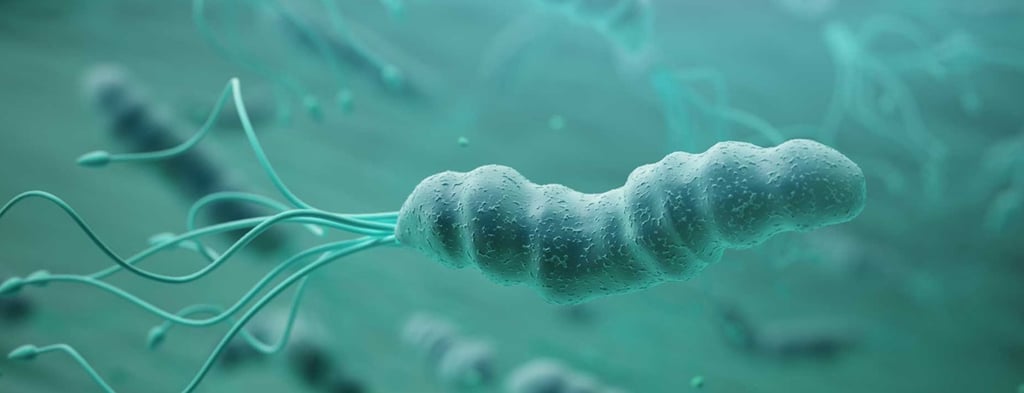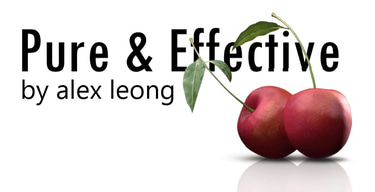

Finding the Good in the Bad: Unveiling Hidden Health Benefits
When it comes to health, it’s easy to get caught up in the idea that some things are inherently "good" and others are "bad." However, perceptions can sometimes be misleading, as what we label as “bad” might not be entirely detrimental. For example, certain substances or practices that seem harmful at first glance can actually play a crucial role in our well-being when used in moderation or managed properly. It’s all about finding the right balance and understanding that not everything fits neatly into these binary categories. By embracing a more nuanced perspective, we can uncover how these so-called “bad” elements can contribute to our overall health in unexpected ways.
The Yin and Yang of Health
In Eastern philosophy, the concept of balance is beautifully illustrated by the Taoist symbol of Yin and Yang. This symbol shows that within the dark (Yin) there is a spot of light (Yang), and within the light (Yang) there is a spot of dark (Yin). This teaches us that everything has its opposite, and true balance comes from harmonizing these opposites rather than eliminating one side.
The Air We Share: Beyond Simple Labels
Even in something as seemingly simple as the air we breathe, balance is key. We often think of carbon dioxide (CO2) as a pollutant, but it plays a crucial role in maintaining Earth's temperature. CO2 is a greenhouse gas that helps keep our planet warm by trapping heat in the atmosphere—a process known as the greenhouse effect. While excessive CO2 from human activities can contribute to global warming, moderate levels are essential for life. This principle applies to our bodies as well; just as the right amount of CO2 is necessary for Earth's climate, it helps regulate blood pH and breathing in our bodies.
Free Radicals: The Unexpected Allies
Antioxidants have been a prominent health buzzword for decades, and as a result, free radicals or oxidants are often unfairly branded as the villains in our quest for well-being. However, free radicals actually have some crucial roles in keeping us healthy. Think of them as the spark that fuels several vital processes in your body. For instance, free radicals are key players in wound healing, speeding up recovery by helping tissues repair themselves. Your immune system also puts them to work—immune cells use free radicals like hydrogen peroxide to neutralize harmful invaders. Even your thyroid relies on them to produce essential hormones.
But their roles don't stop there. In your blood vessels, free radicals help regulate blood flow by dilating them when needed. They’re also busy in your brain, acting as messengers that keep you sharp and focused. And let’s not forget their role in sperm function, where they assist with everything from maturation to fertilization. So, while they might seem like the villains, free radicals are essential in maintaining balance. The key, as always, is moderation! (Source 1) (Source 2) (Source 3)
Cytokines: More Than Meets the Eye
Similarly, cytokines often get a bad rap for their role in inflammation, but they’re actually key players in keeping your immune system balanced. While some cytokines can spark inflammation, others help regulate and calm it down. Surprisingly, some cytokines labeled as “pro-inflammatory” also have anti-inflammatory roles. So, while they’re often associated with conditions like arthritis, they also play a crucial role in healing and protecting us. Most of the time, our bodies know how to handle these signals as long as we don’t stand in their way! (Source)


Helicobacter pylori: More Than Meets the Eye
Take Helicobacter pylori, for example. This bacteria is often blamed for causing stomach ulcers and is even linked to some cancers. However, research shows that H. pylori has a more complex role in our health than we might think. It turns out that H. pylori might actually help regulate certain immune responses and could be associated with a lower risk of asthma and some allergic diseases. It’s like that sneaky antagonist in a story who turns out to be crucial for the plot’s development. (Source 1) (Source 2) (Source 3)
But H. pylori is just one piece of the puzzle. Health issues often arise from a web of imbalances within the body. While H. pylori might play a role, other factors like diet, stress, and overall gut health can also contribute to or mitigate these issues. It’s not just about pinpointing a single culprit but understanding how various elements interact to create balance or contribute to problems. By looking at the bigger picture and addressing these imbalances, we can better manage our health and avoid oversimplifying complex issues.
Cholesterol: It’s About Balance, Not Labels
Cholesterol itself is crucial for health, and maintaining balance in how it is managed is key to overall well-being. To support this balance, focus on maintaining harmony across the gut-brain-liver axis. By nurturing these interconnected systems, you help your liver do its job effectively, ensuring that cholesterol and other vital processes remain in equilibrium.
Cholesterol is often divided into "good" and "bad" categories, but this can be misleading. The key to maintaining healthy cholesterol levels lies in understanding how cholesterol and lipoproteins work together. Lipoproteins, which carry cholesterol through the bloodstream, come in different forms. HDL (high-density lipoprotein) is often labeled as “good,” while LDL (low-density lipoprotein) is considered “bad.” But here's the twist: both types of lipoproteins are just delivery trucks, each with their role in maintaining balance (there are also VLDL and chylomicrons, but that’s a topic for another article!).
The liver plays a central role in managing cholesterol levels and lipoproteins. It produces these "trucks" (lipoproteins) that transport cholesterol throughout your body and ensures the balance of these trucks going out from and returning to the liver. When you consume more cholesterol through your diet, the liver responds by producing less cholesterol and adjusting the number of these trucks accordingly. This adjustment helps maintain a stable balance of cholesterol in the bloodstream. Supporting your liver’s natural ability to regulate these processes is crucial for overall health.
Cholesterol itself plays a vital role in forming cell membranes, producing hormones such as estrogen, testosterone, and cortisol, aiding digestion through bile acids, and supporting overall cellular function. Additionally, cholesterol is a precursor to vitamin D synthesis and helps in the production of Coenzyme Q10 (CoQ10), an important antioxidant that supports energy production in cells. So, while cholesterol often gets a bad rap, it's essential for many important functions.


Stress: It's Not All Bad
Stress often gets a bad rap, but it’s not all doom and gloom. In small doses, stress can actually be a good thing—it sharpens your focus, amps up your performance, and gets you moving. The trick is to keep it in check so it doesn’t tip the scales in the wrong direction. When stress becomes too frequent or turns chronic, it can throw your body’s balance out of whack, messing with how your gut, brain, and liver function. So, while finding harmony in managing what we consider “bad” is crucial, managing stress is just as important. A holistic approach to health, including keeping stress levels under control, is key to overall well-being. After all, too much of anything—be it stress, work, or even relaxation—can knock us off balance.
The Interconnectedness of Health
Our body’s systems are deeply interconnected. Just as nature thrives on balance and harmony, so does our health. We are all part of nature, and understanding the role of these “bad” elements in our health helps us appreciate the intricate balance that keeps us well.
This principle is reflected in Traditional Chinese Medicine (TCM) as well, where the concept of "using poisons to tackle poisons" illustrates that substances that might seem harmful in isolation can sometimes be used beneficially in controlled doses or combinations to address specific imbalances or issues. This approach teaches us that not everything labeled as "bad" is inherently harmful, and balance can often be achieved through careful management and understanding.
By grasping this interconnectedness, we move beyond the blame game. Instead of pointing fingers at individual factors, we focus on how various elements interact within our bodies and strive to harmonize them. In the end, it’s not about removing everything we consider “bad,” but about finding a balance that supports our unique needs. Just as in the Taoist symbol, every element has a role to play, and the goal is to harmonize these elements to promote overall well-being.
Return to:


